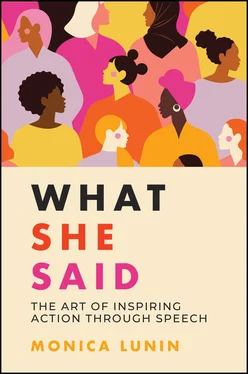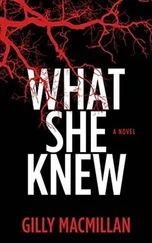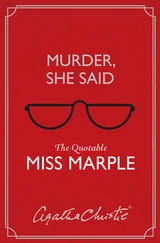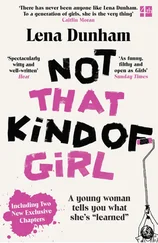Monica Lunin - What She Said
Здесь есть возможность читать онлайн «Monica Lunin - What She Said» — ознакомительный отрывок электронной книги совершенно бесплатно, а после прочтения отрывка купить полную версию. В некоторых случаях можно слушать аудио, скачать через торрент в формате fb2 и присутствует краткое содержание. Жанр: unrecognised, на английском языке. Описание произведения, (предисловие) а так же отзывы посетителей доступны на портале библиотеки ЛибКат.
- Название:What She Said
- Автор:
- Жанр:
- Год:неизвестен
- ISBN:нет данных
- Рейтинг книги:4 / 5. Голосов: 1
-
Избранное:Добавить в избранное
- Отзывы:
-
Ваша оценка:
- 80
- 1
- 2
- 3
- 4
- 5
What She Said: краткое содержание, описание и аннотация
Предлагаем к чтению аннотацию, описание, краткое содержание или предисловие (зависит от того, что написал сам автор книги «What She Said»). Если вы не нашли необходимую информацию о книге — напишите в комментариях, мы постараемся отыскать её.
What She Said
What She Said
What She Said — читать онлайн ознакомительный отрывок
Ниже представлен текст книги, разбитый по страницам. Система сохранения места последней прочитанной страницы, позволяет с удобством читать онлайн бесплатно книгу «What She Said», без необходимости каждый раз заново искать на чём Вы остановились. Поставьте закладку, и сможете в любой момент перейти на страницу, на которой закончили чтение.
Интервал:
Закладка:
… You can't numb those hard feelings without numbing the other affects, our emotions. You cannot selectively numb. So when we numb those, we numb joy, we numb gratitude, we numb happiness. And then we are miserable, and we are looking for purpose and meaning, and then we feel vulnerable, so then we have a couple of beers and a banana nut muffin. And it becomes this dangerous cycle.
One of the things that I think we need to think about is why and how we numb. And it doesn't just have to be addiction. The other thing we do is we make everything that's uncertain certain. Religion has gone from a belief in faith and mystery to certainty. ‘I'm right, you're wrong. Shut up.' That's it. Just certain. The more afraid we are, the more vulnerable we are, the more afraid we are. This is what politics looks like today. There's no discourse anymore. There's no conversation. There's just blame. You know how blame is described in the research? A way to discharge pain and discomfort. We perfect. If there's anyone who wants their life to look like this, it would be me, but it doesn't work. Because what we do is we take fat from our butts and put it in our cheeks. Which just, I hope in 100 years, people will look back and go, ‘Wow.'
… But there's another way, and I'll leave you with this. This is what I have found: To let ourselves be seen, deeply seen, vulnerably seen … to love with our whole hearts, even though there's no guarantee — and that's really hard, and I can tell you as a parent, that's excruciatingly difficult — to practise gratitude and joy in those moments of terror, when we're wondering, ‘Can I love you this much? Can I believe in this this passionately? Can I be this fierce about this?' Just to be able to stop and, instead of catastrophising what might happen, to say, ‘I'm just so grateful, because to feel this vulnerable means I'm alive.' And the last, which I think is probably the most important, is to believe that we're enough. Because when we work from a place, I believe, that says, ‘I'm enough' … then we stop screaming and start listening, we're kinder and gentler to the people around us, and we're kinder and gentler to ourselves.
That's all I have. Thank you.
HOW SHE DID THAT
Bring awe and wonder to the process of discovery
When talking about shame and vulnerability, Brené Brown steps into the shoes of her research subjects. Typically, academic writing and the lectures that follow are rather impersonal. In fact, researchers are careful to remove any traces of themselves from their content. Add in generous doses of technical jargon and we are left with these disembodied voices with which audiences struggle to connect.
But Brown breaks the mould. Rather than telling us about a hypothesis she had and how she went about designing and executing a research study, she makes it personal. ‘You know how I feel about vulnerability …'
Speakers often find it challenging to make technical content relatable. For this problem, Brown's first TED talk delivers a critical lesson. Put yourself in the story, and make the problem, hypothesis and discovery your own. Frame your method in the first person. Don't present a report-like exposition of facts; instead, show us how you were feeling at the various stages of doubt. Display the emotions of wonder as you yourself made new connections.
When Brown uses phrases such as, ‘So I was ready, and I was really excited', it is as though we are doing the research alongside her. We're shown how throwing your whole self into a project like this is anything but dull. We traverse the challenges and doubt with her and we laugh with her about the (not so) mini-breakdown, when her findings did not jive with her assumptions. These challenges, hurdles and mini-triumphs help us relate to the process of discovery. (Brown details her breakdown/spiritual awakening in the full version of her TED Talk — see Sources for details.)
Can you find ways to animate your research or technical content by putting yourself back in the picture? Many of your listeners will be drawn to a familiarity with you and that could be the gateway to gaining their attention and interest.
Establish synergy with your central idea
One of the interesting aspects that make this talk so remarkable is that Brené Brown lives and breathes the very subject of her thesis. Vulnerability is a necessary human condition. Simply saying those words, however, is not enough to convey meaning to the audience. Add the demonstration of the concept, throughout the talk, and you will impact the feeling as well as the thinking side of your audience member's mind.
What Brown manages, quite masterfully in this talk, is to consistently exhibit vulnerability. She takes the concept down from the academic shelf, tries it on and shows us how it looks on her. This not only enhances our understanding of the content, but also draws us closer to the speaker.
In a very un-technical way, Brown openly shares her need for and visits to a therapist. She talks about vulnerability while showing unmistakable vulnerability herself. In the full version of the talk, she explains how she told her therapist:
I know that vulnerability is the core of shame and fear and our struggle for worthiness. But it appears that it is also the birthplace of joy and creativity, of belonging and love.
Even the tiny, seemingly throwaway lines — such as the ‘academic, insecure part' of her asking why she wasn't being dubbed a ‘magic pixie' — are tiny, self-deprecating examples of vulnerability. In the full version, Brown peppers her talk with similar comments — ‘I have a slight office supply addiction, but that's another talk', ‘I always go into this Jackson Pollock crazy thing'. This layering of her own vulnerability makes her more endearing and her ideas more enduring.
Take the time to connect
Imagine you were presenting the findings from years of your own research. Would you be able to do it effectively in just 20 minutes? This is about the maximum length for a TED talk, and with very good reason. The time frame is roughly correlated to our attention span. Given a tight time frame and an overwhelming amount of data, what do you do?
Well, the mistake many of us make is to try to cram in the maximum amount of content. We create data-dense slides and we push the limits to ensure we don't miss any important facts. A better approach is to work out the central idea. Define what you want your audience to take away and then work within the boundaries of the time permitted, with awareness of your audience's engagement, and hit the right note. After all, rushing or over-stuffing a presentation will only confuse and overwhelm your audience. This would ultimately be a waste of time.
Pace is cleverly used here to allow the listener time to assimilate the information. Brown also uses her pauses to connect with people in the audience. She makes eye contact and uses facial expressions that imply she is having a conversation. It feels natural and complements the familiar tone used throughout.
The close to 55 million views this talk has generated can be justified by interesting content — but it is greatly enhanced by Brené Brown delivering it with such care and compassion.
There are people who take it amiss — and I can understand that in a sense — that, for instance, I can still laugh.
Hannah Arendt
Hannah Arendt
Philosopher and writer
B: 14 October 1906, Linden - Mitte, Hanover, Germany
D: 4 December 1975, Upper West Side, NY, United States
What remains? The language remains
When: 1964
Читать дальшеИнтервал:
Закладка:
Похожие книги на «What She Said»
Представляем Вашему вниманию похожие книги на «What She Said» списком для выбора. Мы отобрали схожую по названию и смыслу литературу в надежде предоставить читателям больше вариантов отыскать новые, интересные, ещё непрочитанные произведения.
Обсуждение, отзывы о книге «What She Said» и просто собственные мнения читателей. Оставьте ваши комментарии, напишите, что Вы думаете о произведении, его смысле или главных героях. Укажите что конкретно понравилось, а что нет, и почему Вы так считаете.












